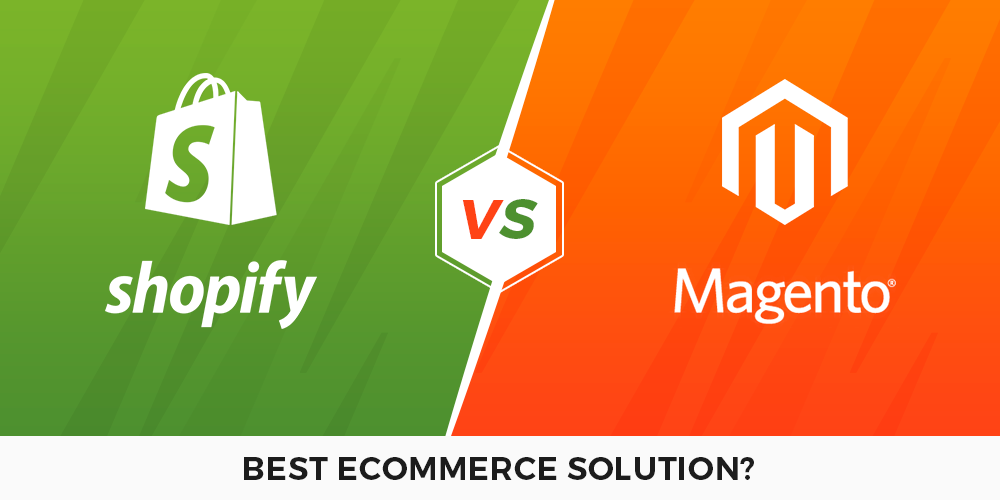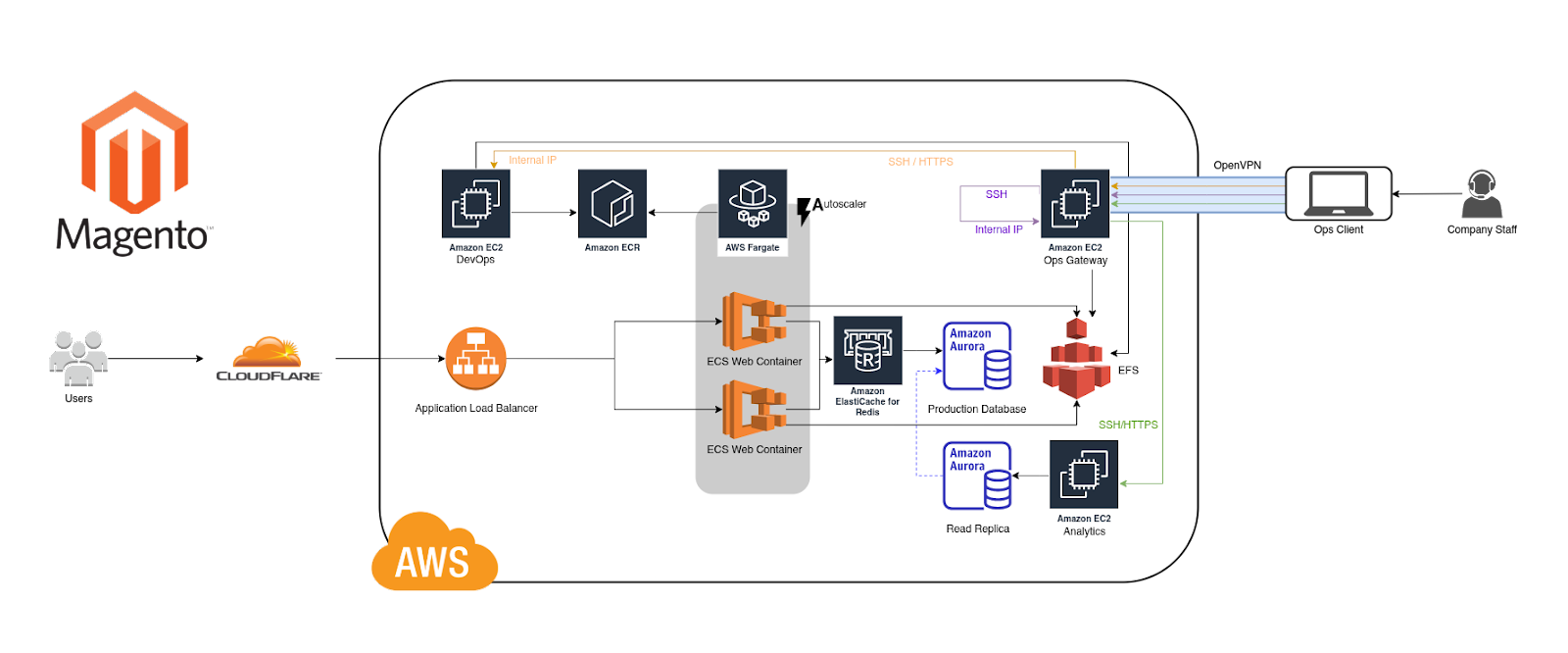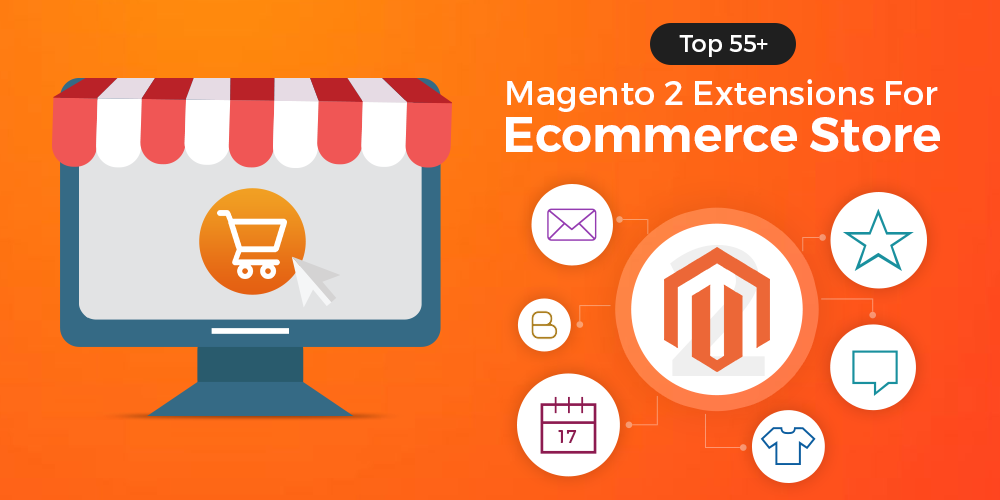Choosing the best-matched platform for an online store is a deciding factor of a successful eCommerce business. Magento 2 and Shopify are often pitted head to head in this race. However, with its powerful and innovative features, Magento 2 becomes the best companion for your e-store. This article will explain to Shopify store owners the reason for the migration from Shopify to Magento 2 is the optimal choice when re-platforming.

Table of Contents
Capabilities
Firstly, let’s look at the capabilities of both platforms regarding add-on extensions. This is where Magento 2 excels, with thousands of robust add-on extensions including both free and paid options. There are over 5000 extensions compatible with Magento 2, providing users with unlimited ways to upgrade their website with out-of-the-box features.
In comparison, Shopify is far behind on add-on apps and integration, which is only around 200 extensions available. This can be explained by the fact that Magento 2 is open-source software, which allows users to create their own desired extensions. Any brilliant ideas popping into your head can mostly turn into a valuable extension to integrate with your e-shop.

Thus, it is obvious that Shopify to Magento 2 migration can allow your creativity to take flight and contribute to your brand’s success.
Scalability
As a business owner, you’ll want your e-store to thrive and grow over time. Thus, an eCommerce platform with a high level of scalability is preferred.

Performing data migration to Magento 2 can help businesses improve their scalability. This is because Shopify is a more simple tool, which provides a low commitment to your business expansion. On the other hand, when users migrate from Shopify to Magento 2, they can enjoy Magento’s extensive flexibility and scalability. In particular, compared to its counterpart, Magento 2 can easily handle a huge amount of traffic and allow websites to stably grow without any hassles.
Themes and customization
A successful eCommerce store calls for a decent design that can stand in the customer’s mind. This point directly translates into the website’s theme – the very first thing that captures the attention of customers.
Both Magento 2 and Shopify offer free and premium themes under a responsive web design, and the number of themes varies between the two. Specifically, Magento 2 takes the lead with thousands of themes available from many creators universally. On the contrary, Shopify shows its disadvantages with only 65 templates to be used. That’s one of the reasons why there is an increasing trend among e-shops to migrate from Shopify to Magento 2.

In the front row of customization, due to Shopify’s proprietary coding and software as a service model, the provider doesn’t offer much customization to merchants. Users are limited to basic modifications such as colors, fonts, image adding, and the wording of features. All you can do is play with some simple functions of theme settings and the editor tool. Beyond this, there isn’t a wide range of customization options.
Magento 2, on the other hand, has a far more diverse collection of design options, offering users unlimited ability to modify your e-store’s website. For example, the platform introduces drag and drop visual editing feature, allowing both non-coders and coders to create their desired sites in no time. Moreover, when switching from Shopify to Magento 2, users can rewrite any part to suit their business needs if they have good technical know-how.
Coding
Coding is an essential element backing up the trend of migrating from Shopify to Magento 2 among users. The two eCommerce platforms are different regarding coding requirements and the technical knowledge needed.

While Shopify uses Liquid as its official coding language, Magento 2 opts for PHP one. As proprietary software, template code is fixed and no adjustment from external sources is allowed. This is a certain downside of Shopify compared to the open-source coding of Magento 2. With the later platform, developers can easily modify the code to suit specific purposes of their eCommerce business.
Acceptedly, Shopify is a good choice for simple e-shops. However, Magento 2 is the ideal one for more complex businesses in which changes to the source code are necessary.
Cost
Cost and pricing are among the deciding factors that businesses consider when re-platform their e-stores. This is when Shopify falls behind and more and more users are migrating from Shopify to Magento 2.
Initial Cost
As a software-as-a-service, Shopify sets a monthly subscription for the use of the platform. In particular, after a 90-day free trial, users have to pay for their access to their e-stores on Shopify. Three pricing packages depending on the number of features you want to integrate with your website. In comparison, Magento 2 still offers free access to merchants, which is certainly an appealing aspect. Besides, the provider also offers an enterprise pricing plan, which is an optional package for the need of some online stores.
When performing Shopify to Magento 2 migration, businesses can reach out to a more customer base with a suitable initial cost.
Hosting Cost

Good hosting is vital for the success of an E-commerce store as it can directly affect the number of features that an e-shop can enjoy such as fast site speed, large storage, or the number of displayed products.
Shopify is software hosted by its provider, so the company determines the hosting cost, and there will be no other option to choose from. On the other hand, as a self-hosted platform, Magento 2’s users can select various options from a third-party hosting service. Compared to its counterpart, this pricing plan is more flexible to serve their needs, and Shopify to Magento 2 migration can be a cost-effective solution.
Cost of Extensions and Add-ons

Both Magento 2 and Shopify set a specific pricing plan for their support of extensions and add-ons features. While Shopify’s users have to pay fixed pricing monthly, Magento 2 offers a one-time purchase of each extension.
Although Shopify’s pricing strategy might appear to be economical at first, switching from Shopify to Magento 2 is considered a profitable investment that benefits customers in the long run. This is because the monthly expense of Shopify can ultimately end up being a huge amount of money with every extension added to your store.
Popularity and supporting the community
Since its groundbreaking appearance in 2004, Magento has maintained its dominant position in the eCommerce platform arena. Meanwhile, as a latecomer, Shopify has also witnessed a surge recently.
However, Magento has established itself as a one-stop solution, and a one-size-fits-all eCommerce platform. That’s why Magento is still incredibly popular among e-shop owners over the years. When it comes to Shopify, this platform is best suited for a more simple website with a limited budget spent. Thus, it is an excellent choice for start-ups, and small, and medium-sized businesses.

Another reason why users decide to migrate their online stores from Shopify to Magento 2 is Magento’s large and highly active community. There are more than 300000 Magento developers universally to provide feasible solutions to help firms’ owners drive their business. These professionals, with their insightful expertise, will serve a vital role in the success of running a business on the Magento eCommerce platform.
The takeaways
To conclude, it is a good practice for business owners to carefully consider various factors when selecting the best-matched eCommerce platform for their business. From what we’ve discussed so far, Magento 2 outweighs its competitor, and Shopify to Magento 2 migration is a winning bet to place.
The process of running the migration process is described in our step-to-step guidance on How to migrate from Shopify to Magento 2 From A To Z. Check it out and follow every stage, then you can easily take full advantage of Magento 2 – the rich feature and powerful eCommerce platform.
As the top solution partner of Magento, Magenest is here to provide you with rational explanations and advanced solutions whenever you confront any issue relating to the platform.











